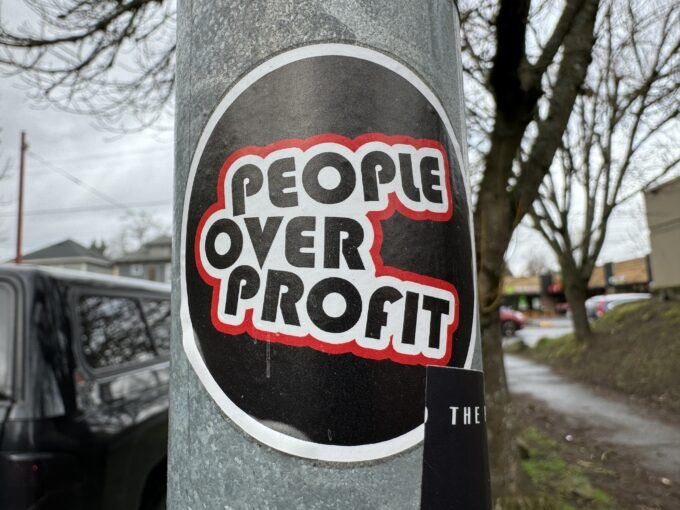
Photograph by Nathaniel St. Clair
If anyone is perplexed or surprised why Americans are so upset about the economy, they should look no further than the Income Distribution and Dynamics in America (IDDA) recent report by the Federal Reserve Board of Minneapolis and its data site that looks at the stagnation of American income and economic mobility in America. It unfortunately confirms what we already know—the neoliberal state benefits unevenly and in ways that confound an ability to challenge it..
America is built upon two myths, the myth of equality and the myth of the American dream. The myth of equality is the idea that we all have an equal opportunity to succeed. The American dream is the idea that by hard work, perseverance, and a little bit of luck, anybody can work themselves out of poverty and potentially become rich. Yet we already knew from previous studies that neo-liberal economic policies have produced a gap between the rich and poor in America from the 1970s to the present that has largely benefited upper-income levels. We also knew that economic mobility has largely stagnated.
Drawing upon IRS and Census Bureau records the Minneapolis Federal Reserve Board was able to construct a portrait regarding the status of income and mobility in America between 2005 and 2019. It does so across gender, race, and geography (state). The importance of this intersectionality is to highlight how inequality and mobility in America is not just about race, it is not just about class, but also how the two intersect in terms of the state where one lives, offering a picture perhaps regarding how specific state policies may impact one’s life prospects.
Generally the IDDA study confirms other reports of the growing income gap. Between 2005 and 2019 those in the bottom ten percent saw their adjusted gross income increase by 5%, whereas those in the top two percent saw a 23% increase. One of the most startling conclusions of the report according to the Federal Reserve Board was that a “household in the bottom 20 percent of the distribution now makes exactly the same as it was making 50 years ago, in real terms.” Regardless of race and gender, unless you are at an upper income level, earnings have stagnated. This can explain both the angry Trump voters who feel they have been left out economically, and the disappointment in Obama-Biden policies that have left most Americans behind. Across the presidencies from the second Bush to Biden, neo-liberal economics has benefitted only few, but even across class there is a skewing.
For example, across the board women continue to lag in income compared to men. In 2005 women generally earned 69% of what men earned, while in 2019 it was 74%. But the gap varies across income levels. At the 10th percentile (lowest income level) in 2005 women earned 61%, by 2019 It was merely 70.8%. At the 50th percentile in 2005 women earned 68% of what men earned, in 2019 it was 74%. But then by the time one gets to the 99.999 percentile in 2005, it was 26% compared to 29% in 2019 Over time, depending on your income level women made modest at best improvements in bridging the gap between their income and those of men.
But when we look at different states for example, as well as break it down by gender and race we find, for example, that in Texas, Hispanic women make 43% of white males, white women make 63% compared to white males, and Hispanic men make. 67%. Whereas in California Hispanic women make 46%, white women 69%, and Hispanic men 62%. Despite two different political cultures and different political party domination, the difference in income between California and Texas is modest at best.
In terms of mobility, while the statistics in the IDDA project break it up by state and by income in general from 2005 to 2018 a portrait of stagnation also appears. For men in general, there is a 62% chance of moving from the lowest income quartile to the next quartile for women 57% Hispanic 63%, Whites 59%. Blacks 54%. At best, slightly better than even chances of moving up from that lowest income quartile to the next quartile, with the probabilities of moving even further up even more significantly diminished.
The IDDA report provides perhaps the best detail we have so far on the economic and social consequences of neo-liberal economic policies in America. It demonstrates uneven distributions of benefits in ways that nearly everyone can claim to be a loser while also pointing to relative winners, thereby thwarting efforts to form any solidarity to fight these policies.
Yet despite this socio-economic news, voters this November will face a rematch of two neo-liberal presidential candidates, with little hope that the pattern of inequality and frozen mobility will change.
No comments:
Post a Comment